… from the Wychwoods Albums Archive
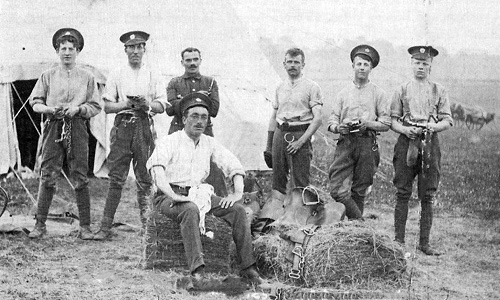
Mabel Pearce (nee Miles) remembers the sound carrying to Milton of men marching down the Chipping Norton road to Shipton. It seems that the encampment by Cow common Plantation along New Road was in use before the outbreak of the war. One of the soldiers from the camp, Arthur Catling, married a Shipton girl, Dorothy Turner, in Shipton in January 1914.
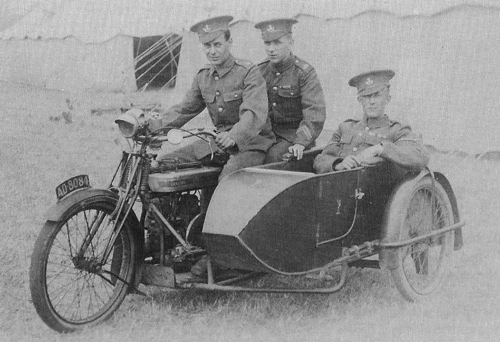
The enthusiasm for the War which was expected to be ‘over by Christmas’ caused many youngsters to enlist under-age, like Benjamin Standing the pillion rider and Ernest Ashmore who both enlisted at sixteen. It was regarded as a great joke by their families that they were thought to be competent to guard the wireless poles by the camp. Benjamin was ‘reclaimed’ by his parents and discharged but Ernest went on to serve the whole war and was a Quartermaster Sergeant in the Second World War.
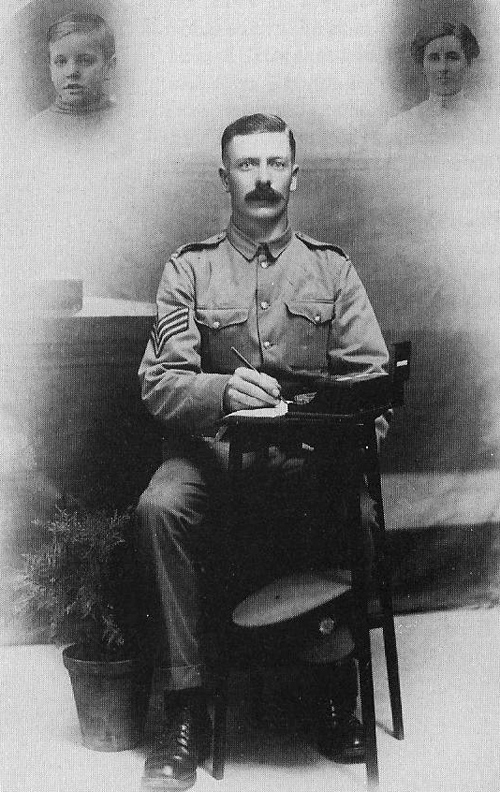
Horace Day was a baker’s boy working for Gorton’s Stores before the war and was with the Royal Army Service Corps, which included service in the Dardanelles. He later worked as a storeman for Alfred Groves for many years.
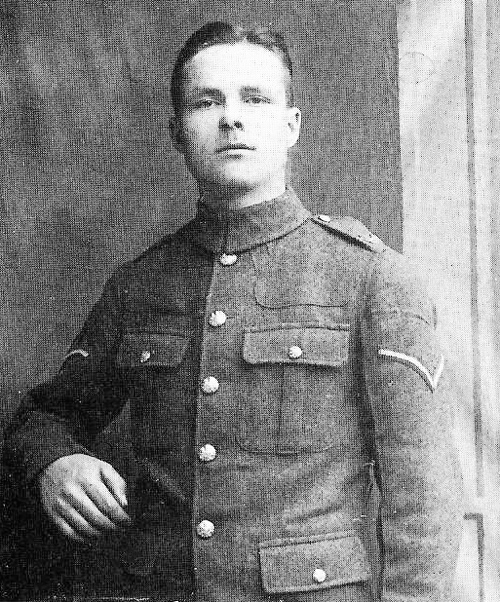
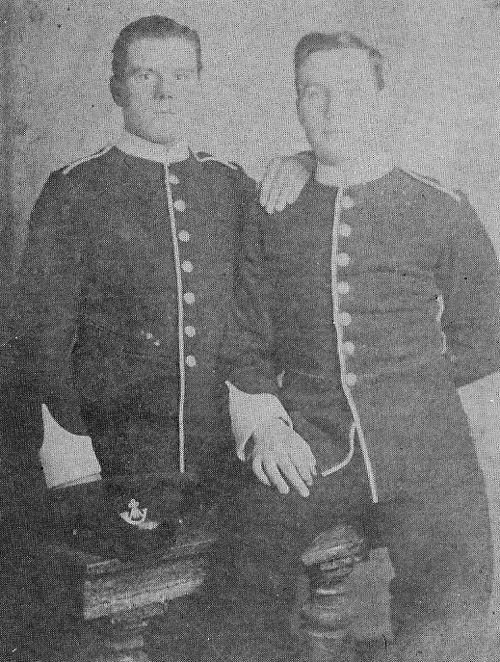
In the Wiggins family, three of the four brothers who served died; Roy in 1915 at Hoge in the second battle of Ypres, and Charles in 1915 of fever in the Persian Gulf. Tom, who enlisted with the Oxfordshire and Buckinghamshire Light Infantry and then the Royal Flying Corps, married Ada in 1918, but was killed in Alsace Lorraine before the birth of his daughter, Pamela. Aubrey was wounded at Ypres.
Phyllis, their sister, went to work in a munition’s factory at Shepherds Bush. Their younger sister, Winifred, married Harry Miles in 1922, and of his family, one brother had been killed and two others badly wounded. His sister, Rose, had served as a Red Cross nurse. Winifred’s brother, Charles, and his friend, Charles Coombes threw away their lunch baskets over the hedge, left Milton to volunteer and never returned.
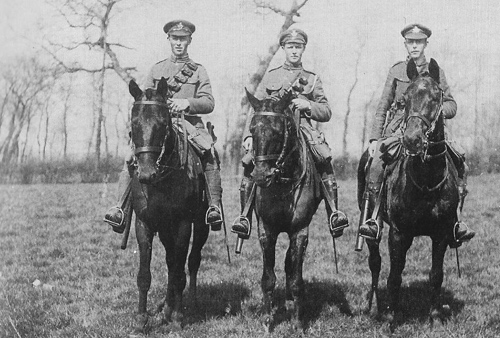
This photograph of the Hartley boys was taken about ten years later, and was sent as a postcard by Ernest to Eric Matthews. ‘What do you think of these ‘fine soldats? . . .. On seven days manoeuvres all the brigade.’ Tom was killed at Caumont, near Arras in December 1916.
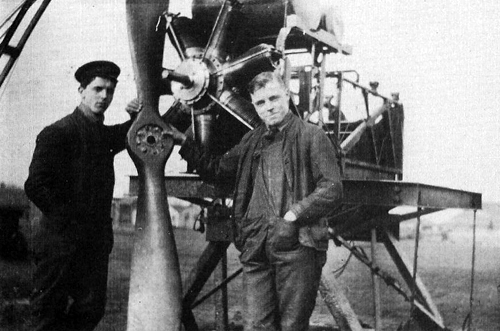
Reg Bradley, an engineer with W. H. Rawlins in Milton before the War, served with the Royal Naval Air Service, working on engine maintenance at Redcar. In this photograph the engine on test is a Gnome 80hp French rotary used extensively in the First World War in fighter planes, such as the Bristol Bullet and the Avro 504.
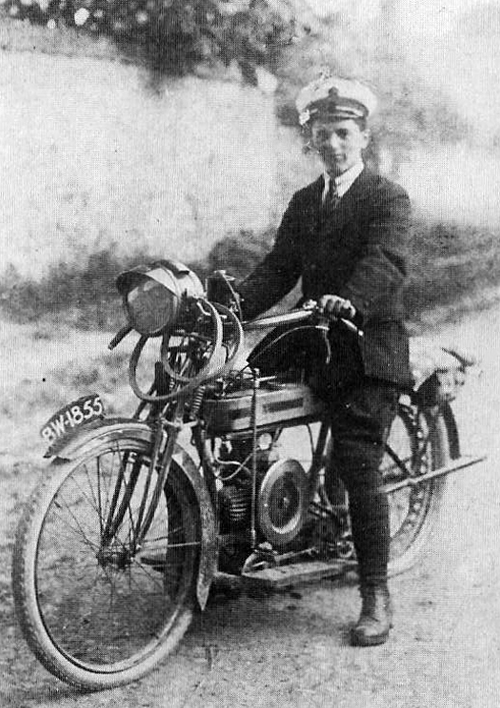
Home on leave, Reg Bradley borrowed Sam Groves’ Douglas motorcycle to visit a friend at Stones field. It had no gears, and the spare drive-belts are hanging on the headlamp.
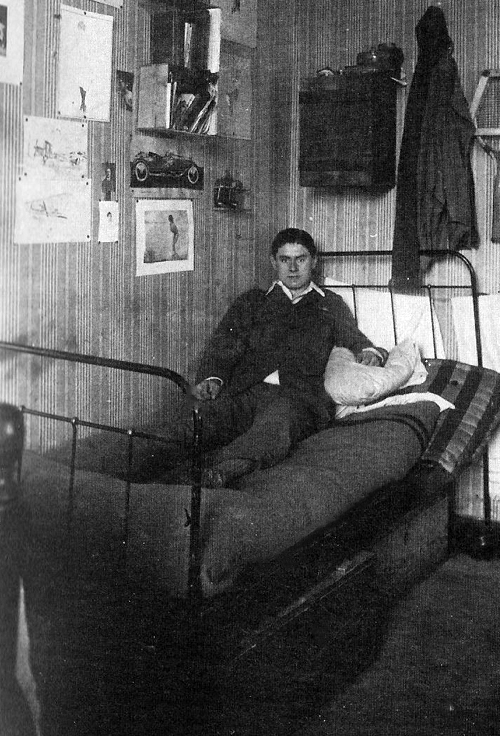
Eric Matthews (1897-1973) was another volunteer who enlisted under-age in 1914, with the Oxfordshire Yeomanry. He was invalided home from the trenches with enteric fever. When he had recovered, he enlisted in the Royal Flying Corps. Shortly after his training, he was shot down and held as a prisoner for nineteen months, over his 20th and 21st birthdays. He was held in Augusta bad, where this photograph was probably taken, showing him convalescent after a bullet was removed from his leg. He was then moved east to Steinitz in Silesia in 1918. In his surviving letters home, he described his day in Steinitz. · ‘We get up about 8.55, appelle at 9 o’clock, breakfast about 10. Mess about – knock a tennis ball about outside, walk round or do something – Tea about 3.30 & supper about 6.30. We are locked in our huts at 10 pm.’
Wychwoods Album Menu
This is one of series of snapshots taken from the Society’s publications “The Wychwoods Albums”. These publications from the mid to late 1980s feature a variety of images of the Wychwoods, all of which deserve a place in our expanding online archive.
Select from:
WW1 Wychwoods Military | WW1 Wychwoods Memorabilia | Shipton WW1 Miscellany | St Michael’s Shipton Early 1900s | Early Prebendal Scenes| Shipton Court 1930s | Milton Scenes Early 1900s | Milton Social Activities | Farming Activities and People | Ascott Early 1900s | Leafield 1900s – 1930s | Fifield Residents Early 1900s | Idbury Early 1900s | Lyneham Miscellany| WW2 Evacuees | WW2 Wychwoods Home Front| WW2 Victory Celebrations|The First Wychwood Album

